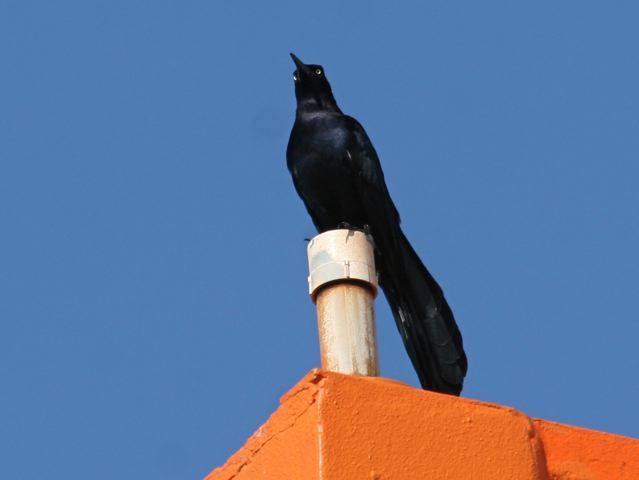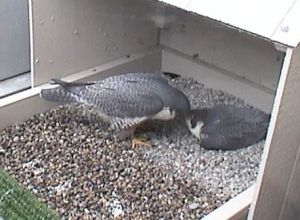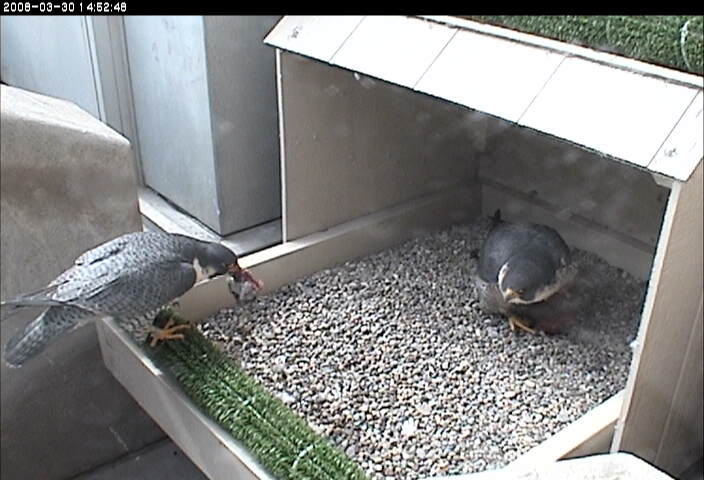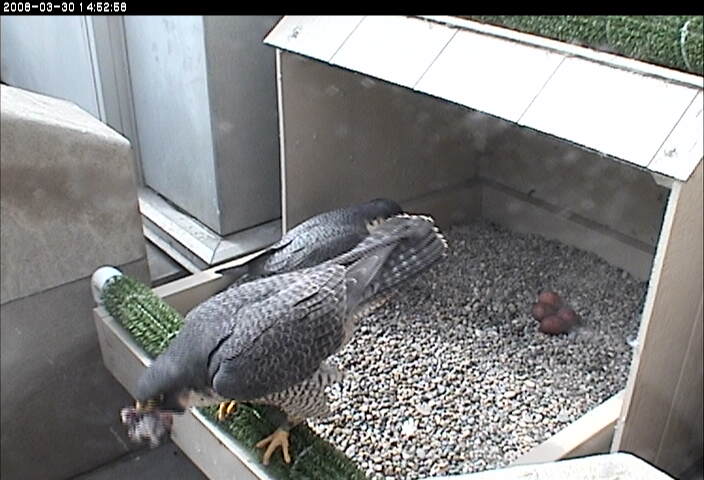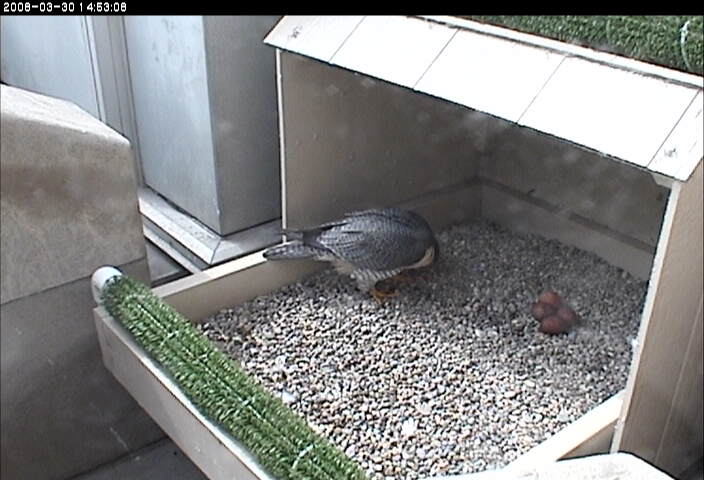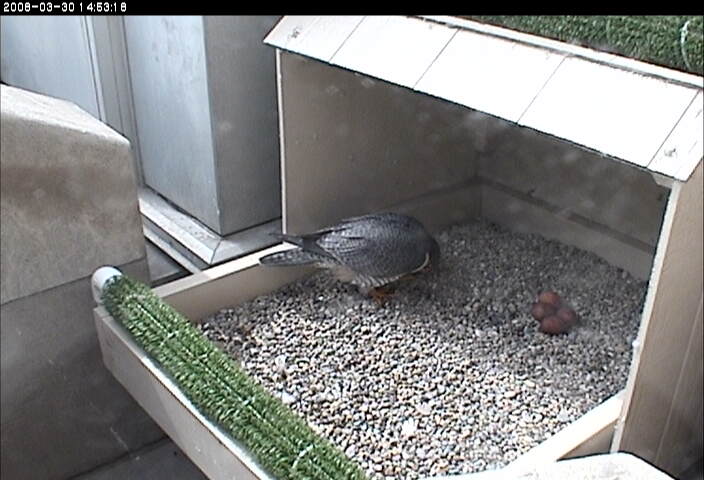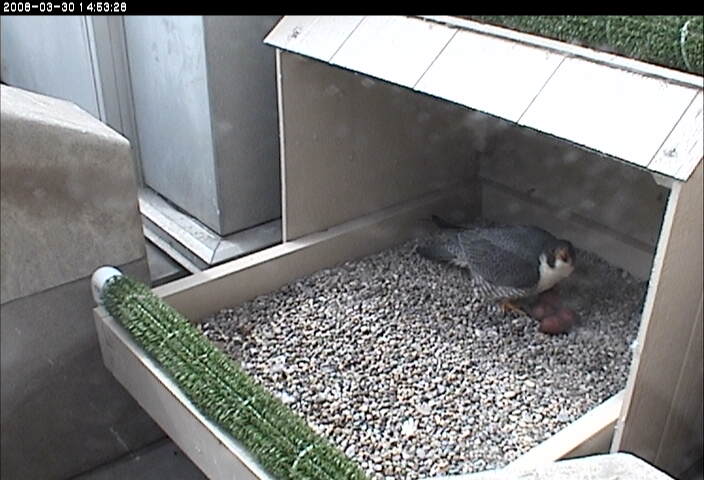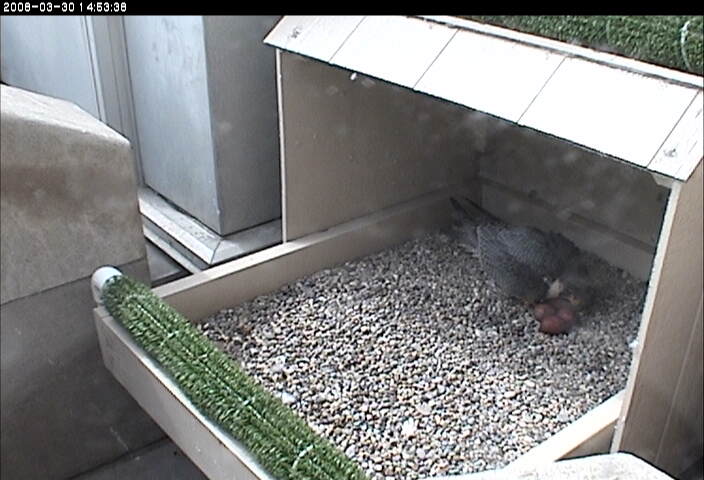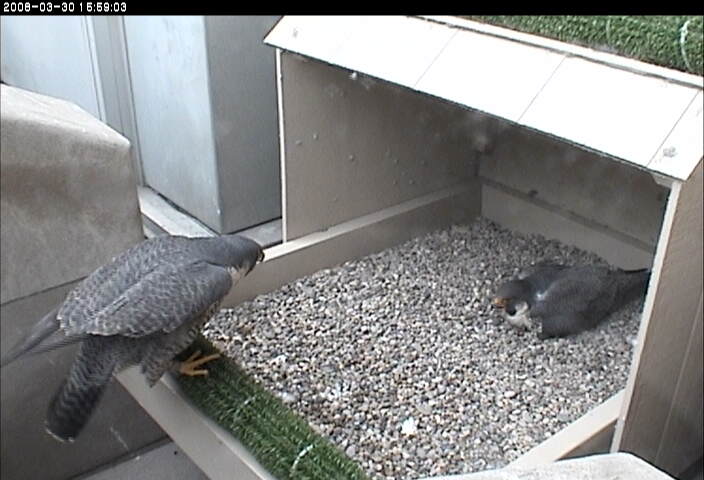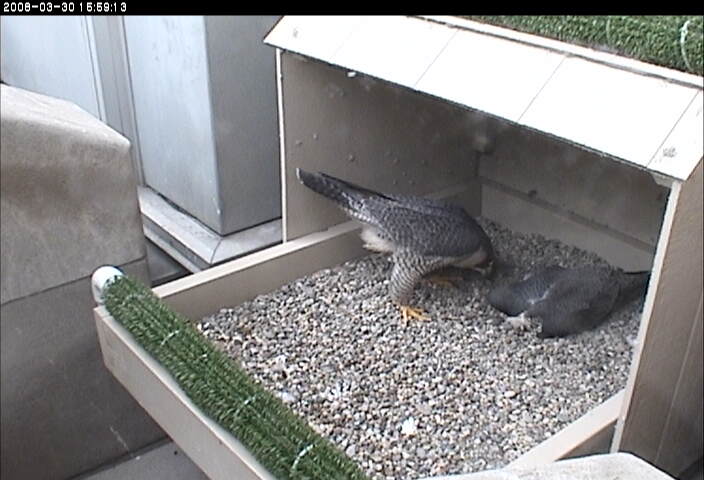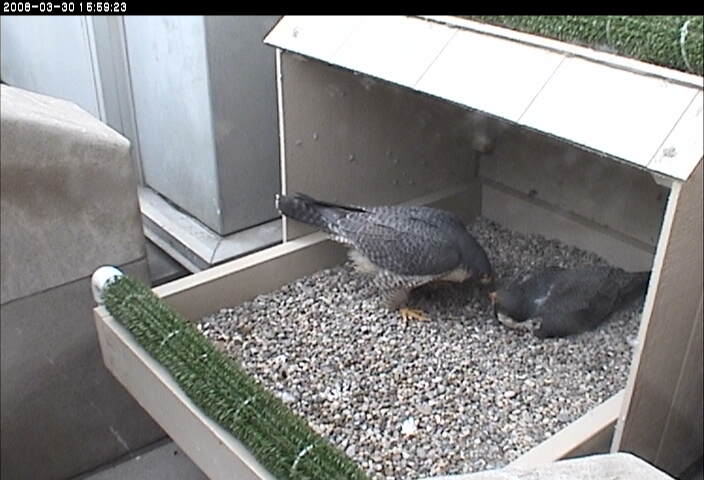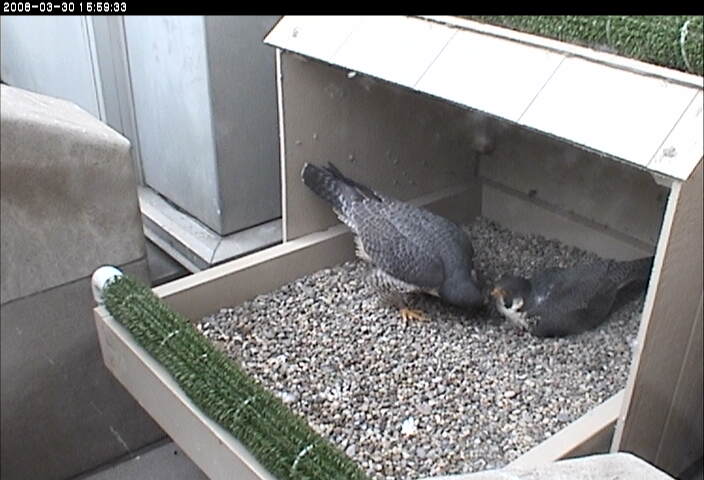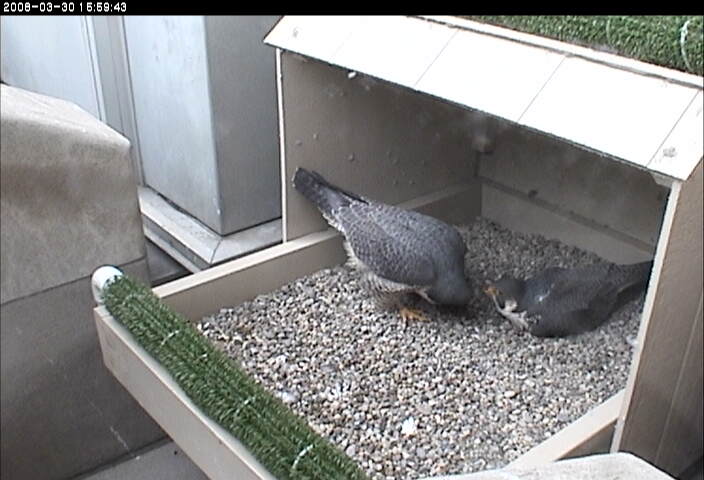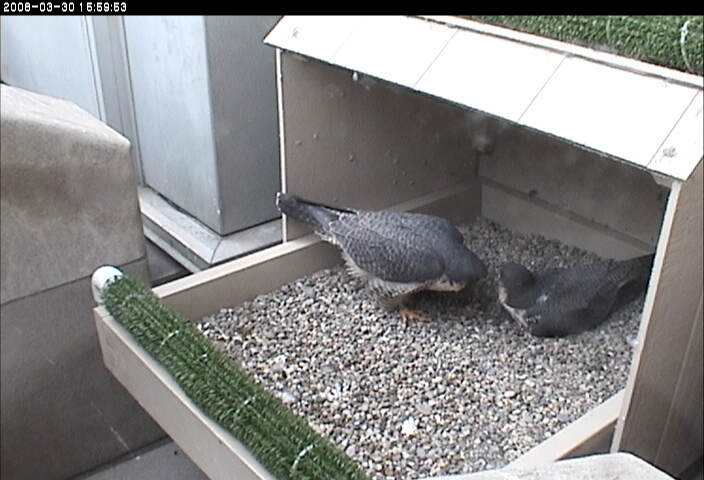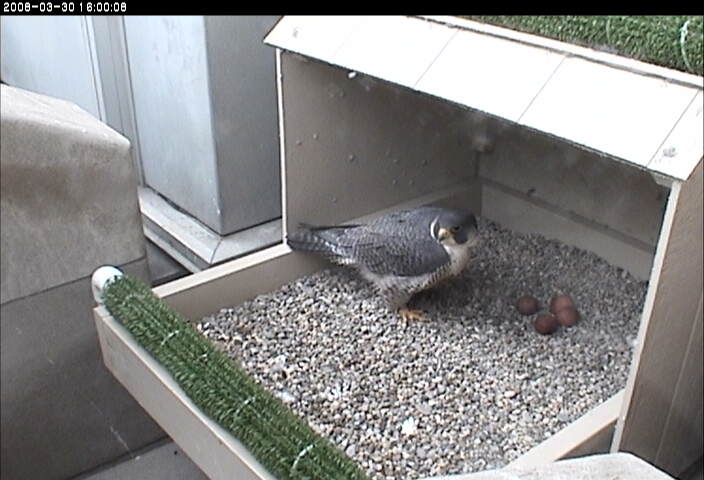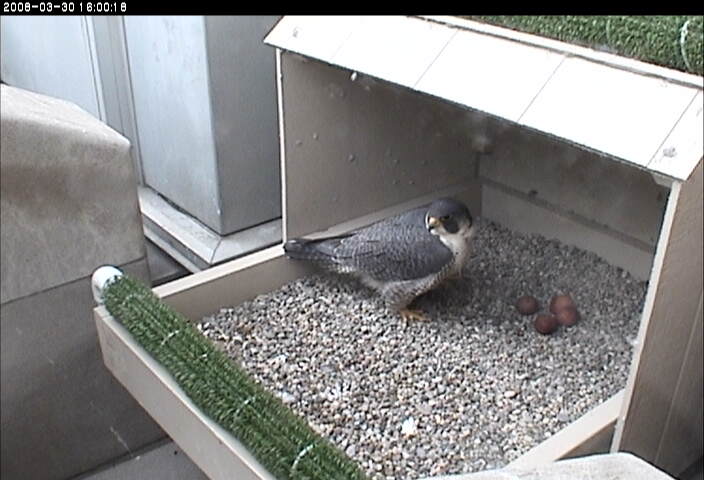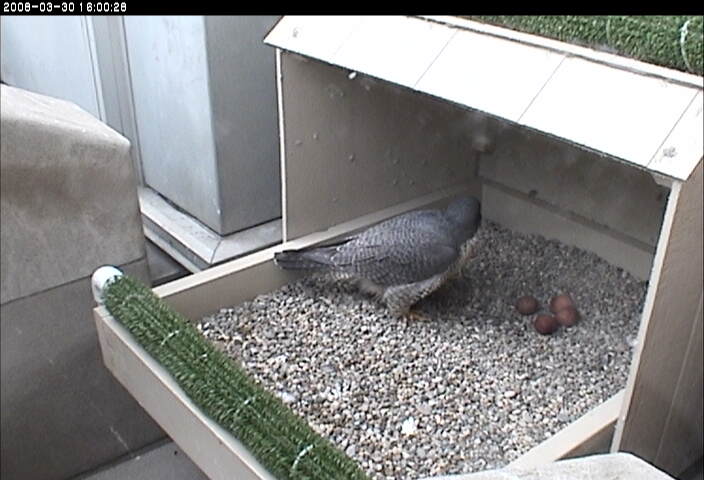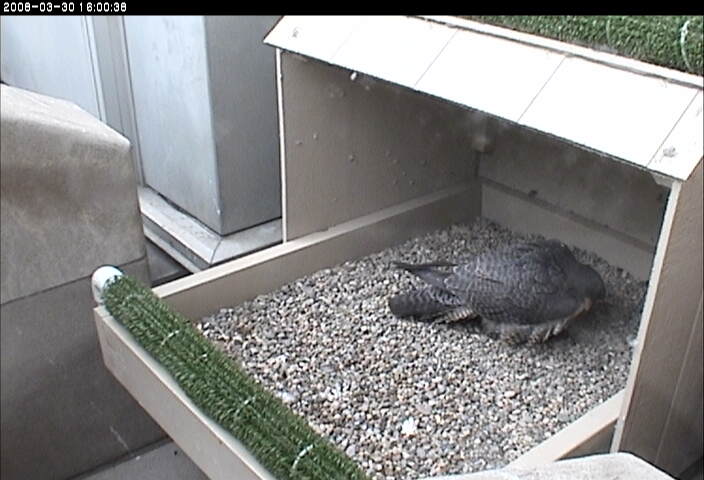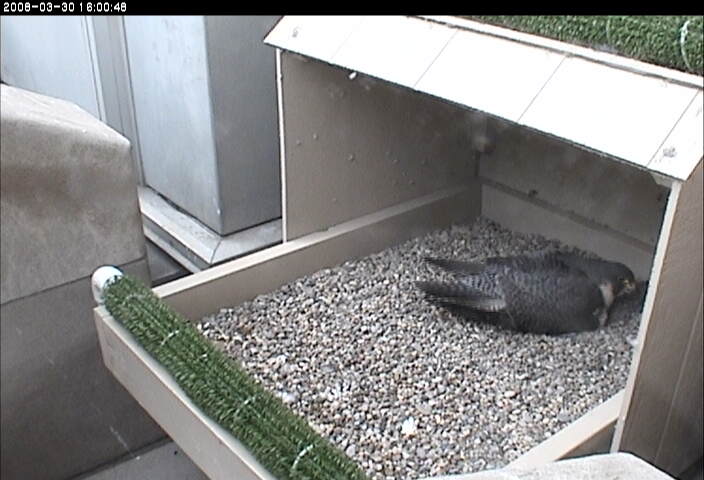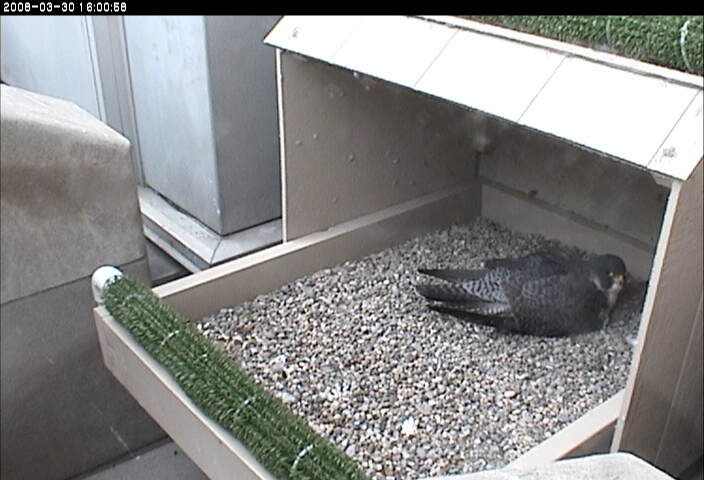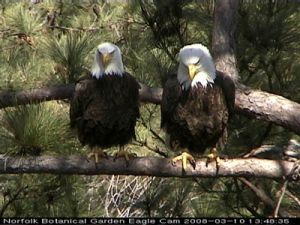 If you think the Pittsburgh peregrines’ life is a soap opera, they’re not the only ones.
If you think the Pittsburgh peregrines’ life is a soap opera, they’re not the only ones.
My mother keeps me informed about a pair of bald eagles with their own Peyton Place at Norfolk Botanical Garden in Virginia. Their nest has an Eagle Cam so people can watch the drama — and there’s been plenty of it.
This pair has nested at the Garden for seven years, but this year after the female had laid two eggs a 4-year-old female intruder arrived, chased away the resident female and made herself charming to the resident male. The eggs got too cold to be viable and had to be removed from the nest. After a brief fling, the intruder left and the original pair reunited.
It looked like life was back to normal when the original female laid two more eggs, but those eggs bit the dust too. Something scary made her jump around in the nest at night and she stepped on them. Oh no! They cracked! She ate them the next day.
She laid one more egg (her third try this year) and has been incubating it since March 22.
So you see, life can be complicated even if you’re an eagle.
Read more and watch the videos at:
- Eagle cam
- Coastal Journal by Mary Reid Barrow in the Norfolk Pilot Online
- Pictures, including the one above
- Wildlife watching in Virginia
(snapshot from the Norfolk Botanical Garden eaglecam)
UPDATE, late May 2008: The single egg hatched but in mid-May the eaglecam showed that the lone eaglet had a growth on his beak. Every day the growth got larger. By May 22, the Virginia Department of Game and Inland Fisheries decided the bird needed to be examined. When they pulled the eaglet from the nest, they discovered the growth had started to deform his beak. He was sent to the Wildlife Center of Virginia for treatment and possible surgery.
Tests showed the eaglet has avian pox, a common bird disease (no danger to people). He has been getting excellent treatment – even an MRI! – and receiving a regimen of drugs to help him get better. Meanwhile the growth has shrunk considerably, making future surgery a safer option though his recovery has no guarantee. He sure is one high-tech eagle!
Back at Norfolk Botanical Garden, his parents consider the year a loss. They continue to stay at the Garden and will undoubtedly try again next year.
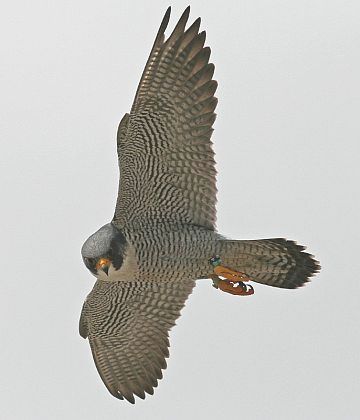 Erie, the original male peregrine at University of Pittsburgh, is gone but not forgotten. He lives on in the falcons he fathered – Pitt peregrine alumni who now live elsewhere.
Erie, the original male peregrine at University of Pittsburgh, is gone but not forgotten. He lives on in the falcons he fathered – Pitt peregrine alumni who now live elsewhere.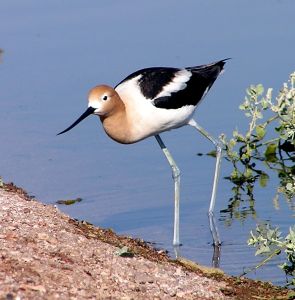 This weekend I’m going to see this bird, an
This weekend I’m going to see this bird, an 